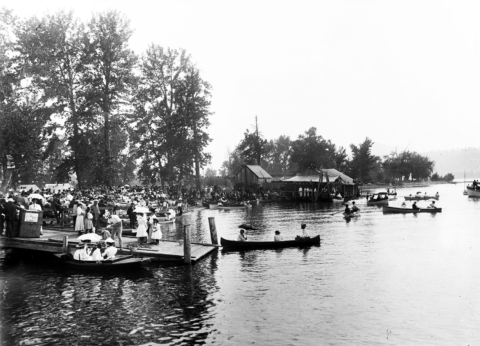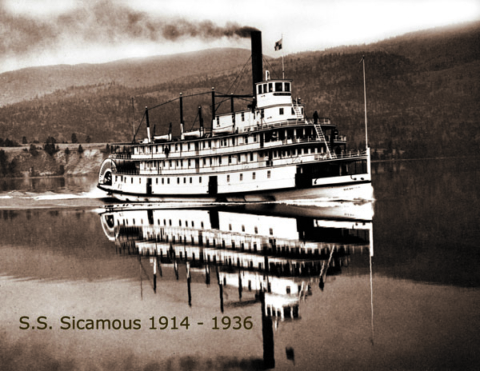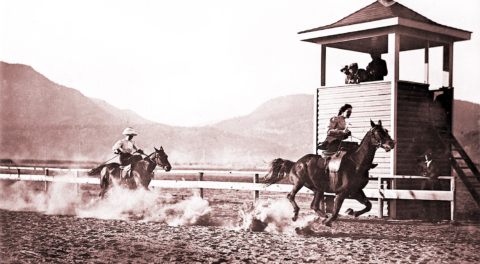In 1906, a small group of settlers living close to an isthmus between Wood Lake and Kalamalka Lake, on the Vernon-Kelowna road, got together to establish a post office. One of the largest properties was owned by Dr. Irving and he donated property close to the stage route for this purpose. Mrs. Irving, the Doctor’s mother, suggested the name “Oyama”.
As the story goes, the senior Mrs. Irving had a fascination with Prince Oyama Iwao, field marshal during the Russo-Japanese War at Port Arthur 1904-1905. She had followed the glowing account of the battles in Manchuria and his rise in the ranks of the Imperial Japanese Army and the court of Emperor Meiji. He was decorated and promoted no fewer than a dozen times. She followed his exploits in the London Illustrated News, delivered by mail, on a monthly basis.
The name was accepted by the powers that be, and her other son, Henry, was made postmaster. On June 6th, it was opened.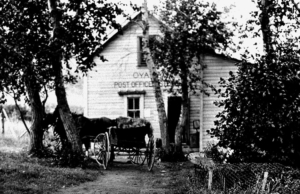
Had Mrs. Irving done a little research, she would have found that “Oyama” was not exactly a suitable name for a peaceful, Christian community. She may have also found a sordid connection between the ruthless Japanese war engine and the British and Canadian forces.
Firstly, who was this famous Marquis Oyama, commander-in-chief of the Japanese Second Army…..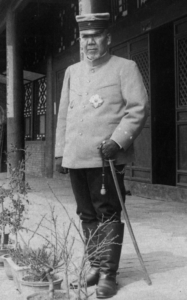
In 1870, he was official Japanese observer to the Franco-Prussian War while studying at the Ecole Militaire de Saint Cyr in France. He spent the next three years studying European languages in Geneva where he became fluent in Russian. He continued on to New York to study at Temple Hill Academy. Soon after he was promoted to major general and returned home to re-establish the Imperial Army that, at this time, was in disarray.
He was posted to the first Sino-Japanese War in 1894, where he fought the Qing Empire, primarily for influence over the tribute state of Korea. The defeat of the Chinese forces changed the world’s view of dominance in East Asia from China to Japan. The Europeans took notice.
The war took place at Central Dalian, on the Liaodong Peninsula, jutting into the Gulf of Chihli at the mouth of the Yellow Sea. Both sides, strangely, had European envoys acting as observers and more often strategists. Whoever ended up in-charge, the world’s imperial powers wanted access to the markets of the orient.
The deep water of Port Arthur (named for Royal Navy Lieutenant, William C. Arthur who surveyed the harbour in 1860 when it was the unfortified fishing village of Lushun) was the most strategic tip of the peninsula, controlling access to Tianjin and the mainland. The Chinese troops put up only token resistance to the well organized and heavily armed brigades that entered the city on November 21st, 1894. One of Oyama’s generals, Yamaji Motoharu, went into a rage when he was shown the heads of several Japanese soldiers captured by the Chinese troops and executed. He turned his troops to the village and ordered them to shoot every member of the population. It was estimated that over 20,000 unarmed civilians were tortured, mutilated and killed.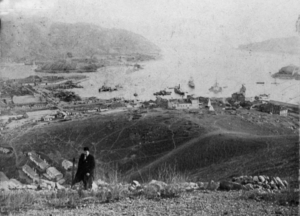
Oyama was heavily criticized for his ambivalence of the event by American newsmen who accompanied the troops. Several reports were conveyed to the major newspapers of the day putting Oyama to blame for the entire massacre.
Oyama wished to move his navy into the harbour but was stopped by combined French, British and Russian attachés, who were instructed to keep the harbour “international”. The Japanese had been given the Liaodong Peninsula as part of the Treaty of Shimonoseki in 1895, but were forced to give it back when threatened with war by those same envoys. They called it “The Triple Intervention”. This humiliation was compounded by a lease granted to the Russians from the Chinese to build a railway to the port from their Manchurian coastal line.
Oyama and his troops pulled back to disputed lands in Manchuria and waited. During this period, he was made Field Marshal, then Commander-in-Chief of all armies in Manchuria. That’s when the Russians began their annexation of Port Arthur.
Many attempts were made at arbitration as to the respective role of territorial influence in Manchuria for a couple of years. But as these negotiations were going on, Russia continued to fortify Port Arthur and to bring her warships into the harbour. With numerous agreement papers on the table and many attaches at the desk, Japan declared war on Russia in February 1904.
The Canadian military sided with the Japanese and assigned Boer War veteran, Major General Herbert Thacker, as attaché with Oyama’s troops. He took along No. 2 Battalion, “C” Pac Brigade Engineers from Pembrooke to assist. His instructions were to observe and report the impact of modern weapons within a siege of large troop masses. This conflict was the first in history that didn’t involve mounted troops with single shot weapons. This war involved new massive artillery, machine guns,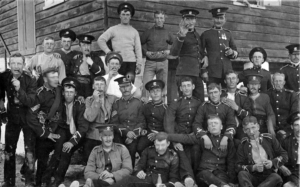
barbed wire and searchlights. Some of the warships could fire shells into fortifications 5 miles distance. Many of the techniques used to destroy fortifications and move troops would be used in the Great War a decade later.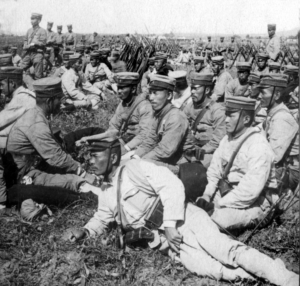
Oyama completed his defeat of the Russians at the Battle of Mukden. Mukden (now called Shenyang) was a large industrial centre halfway between Port Arthur and Harbin on the Russian-Manchurian Railway line. The Russian forces numbered 340,000 and they faced 270,000 Japanese. Both had the most modern war machines available from European manufacturers like Krupp in Germany and the U.S. Army.
The battle began February 20th and ended March 10th with Japanese occupation. The Russians pulled back to the border in the north. Russian casualties amounted to 90,000 and the Japanese lost 75,000. European analysts concluded that their superior forces from previous conflicts could now be defeated by a relatively tiny Asian empire. The Tzarist government was irritated by the incompetence of their commanders and shifted their imperialistic advances toward the Balkan regions.
Major Thacker had his report to the military buried by his superior, Lieutenant-General William Nicholson. Thacker was awarded the Order of the Sacred Treasure, third class; and the Japanese War Medal before he was posted to a desk as Director of Artillery in Ottawa.
![]() Oyama Iwao was elevated to “Prince” after the victory and spent his declining years as Lord Keeper of the Privy Seal. As a large man who enjoyed large meals, he died of diabetes in 1916.
Oyama Iwao was elevated to “Prince” after the victory and spent his declining years as Lord Keeper of the Privy Seal. As a large man who enjoyed large meals, he died of diabetes in 1916.![]()
![]()
Our tiny community on Kalamalka Lake is now part of the tri-villages making up Lake Country Municipality. It has forgotten its roots and the fact that the district welcomed the first of the Japanese Immigrants to settle in the Okanagan in 1907.

